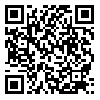Volume 7, Issue 6 (2-2012)
J Health Syst Res 2012, 7(6): 0-0 |
Back to browse issues page
Download citation:
BibTeX | RIS | EndNote | Medlars | ProCite | Reference Manager | RefWorks
Send citation to:



BibTeX | RIS | EndNote | Medlars | ProCite | Reference Manager | RefWorks
Send citation to:
حبيباله دهقان, احساناله حبيبي, بهنام خدارحمي, حسينعلي يوسفي, اکبر حسنزاده. بررسی ارتباط شاخص نمره گذاری استرین گرمایی و شاخص دمای تر گوی سان با شاخص استرین فیزیولوژیکی در محیط کار گرم در مردان. J Health Syst Res 2012; 7 (6)
URL: http://hsr.mui.ac.ir/article-1-299-en.html
URL: http://hsr.mui.ac.ir/article-1-299-en.html
1- Lecture, Department of Occupational Health, School of health, Isfahan University of Medical Science, Isfahan, Iran
2- Associate Professor, Department of Occupational Health, School of health, Isfahan University of Medical Science, Isfahan, Iran.
3- MSc Student, Student Research Committee, Department of Occupational Health, School of health, Isfahan University of Medical Science, Isfahan, Iran.
4- Lecture, Department of Occupational Health, School of health, Isfahan University of Medical Science, Isfahan, Iran.
5- Lecture, Food Security Research Center, Department of Biostatistics and Epidemiology, School of health, Isfahan University of Medical Science, Isfahan, Iran
2- Associate Professor, Department of Occupational Health, School of health, Isfahan University of Medical Science, Isfahan, Iran.
3- MSc Student, Student Research Committee, Department of Occupational Health, School of health, Isfahan University of Medical Science, Isfahan, Iran.
4- Lecture, Department of Occupational Health, School of health, Isfahan University of Medical Science, Isfahan, Iran.
5- Lecture, Food Security Research Center, Department of Biostatistics and Epidemiology, School of health, Isfahan University of Medical Science, Isfahan, Iran
Abstract: (1363 Views)
Background: Heat stress is a common and usual problem in industries. Several indices, including wet bulb globe temperature (WBGT), are used to evaluate heat stress. However, WBGT index has limitations such as high cost and response time. It is not thus suitable as a screening tool. Heat strain scoring index (HSSI) is also an observational-judgmental technique that has been developed for primary screening. The purpose of this study was to survey the correlation between HSSI and physiological strain index (PSI) in normal conditions. In case of a strong correlation, HSSI could be used as a primary screening tool for heat strain in the workplace. Methods: This analytical study was conducted on 145 healthy men. Heart rate and oral temperature were respectively measured using a heart rate meter (RS100POLAR model) and an oral thermometer (TB100 model) at rest and after 1.5 hours of work. WBGT index was recorded and the HSSI questionnaire was completed simultaneously. Finally, the correlations between the indices were evaluated using Pearson's correlation test. Results: Pearson's correlation test showed a significant correlation between HSSI and PSI (P < 0.001; r = 0.397). WBGT and PSI were also significantly correlated (P < 0.001; r = 0.57). A strong correlation was observed between HSSI and oral temperature (r = 0.556). Conclusion: In comparison with WBGT index, HSSI showed a higher correlation with PSI. The values of WBGT, PSI, and oral temperature had increasing trends for levels of risk of HSSI. As a result, according to the higher correlation of HSSI with PSI, and its inexpensiveness and ease of use, this index can be used as a primary screening tool for heat strain in the workplace.
Type of Study: Research |
Subject:
education health and promotion
Received: 2020/07/16 | Accepted: 2023/03/4 | Published: 2023/03/4
Received: 2020/07/16 | Accepted: 2023/03/4 | Published: 2023/03/4
| Rights and permissions | |
 |
This work is licensed under a Creative Commons Attribution-NonCommercial 4.0 International License. |





